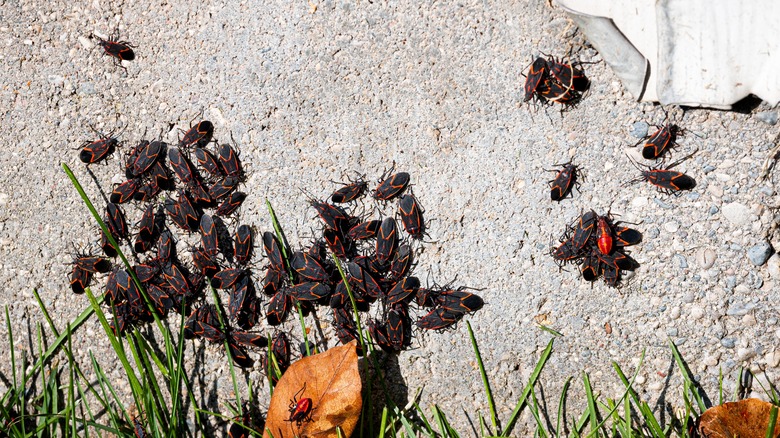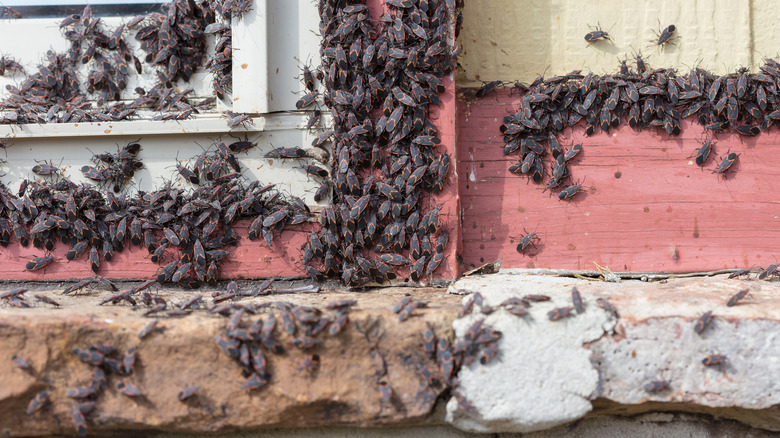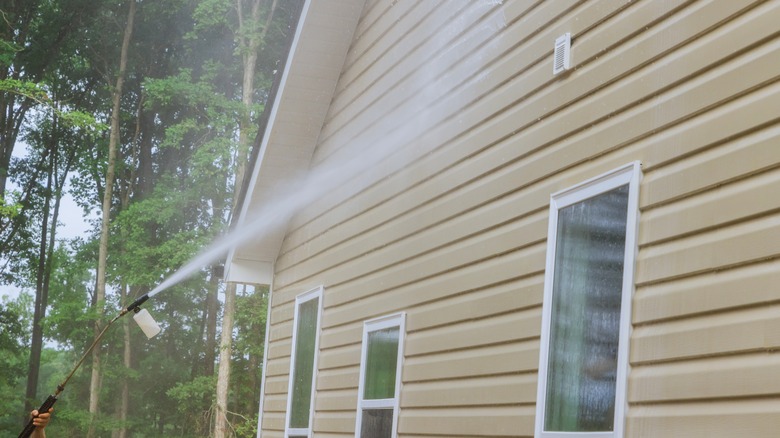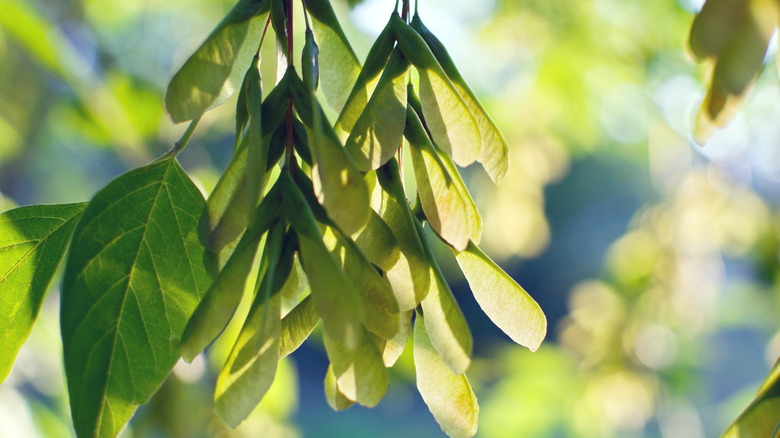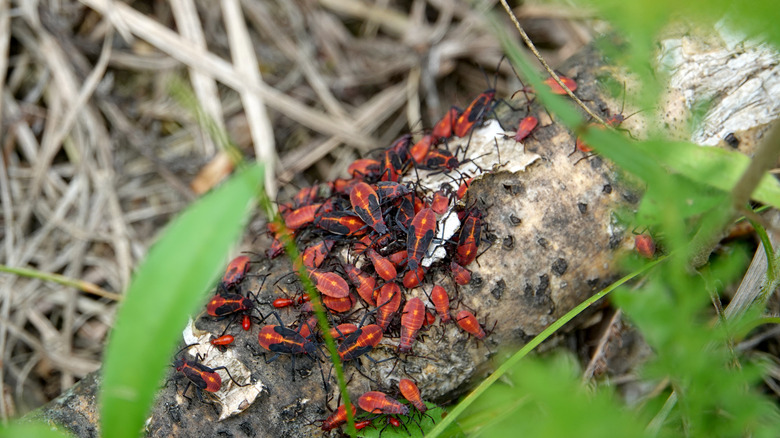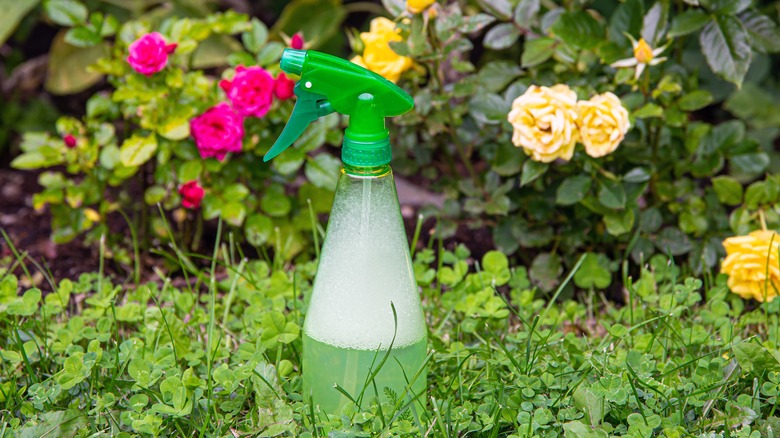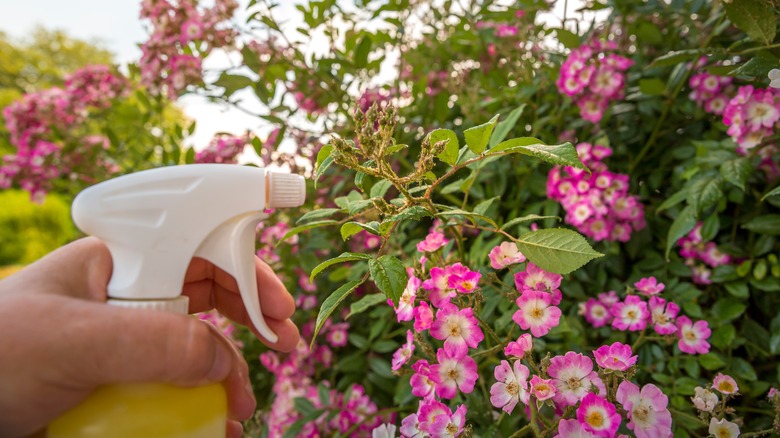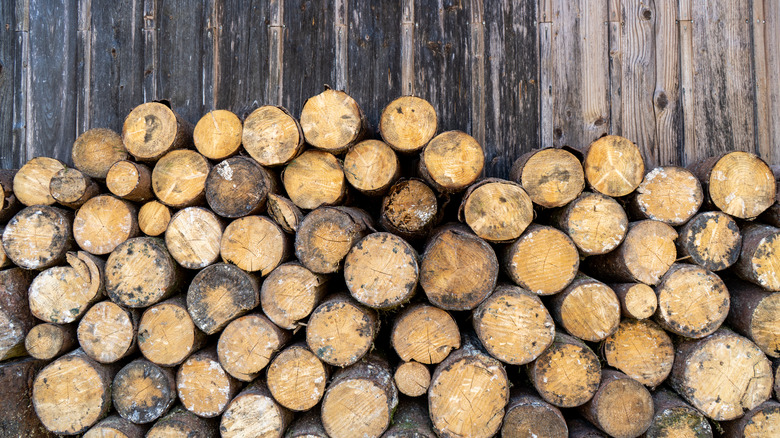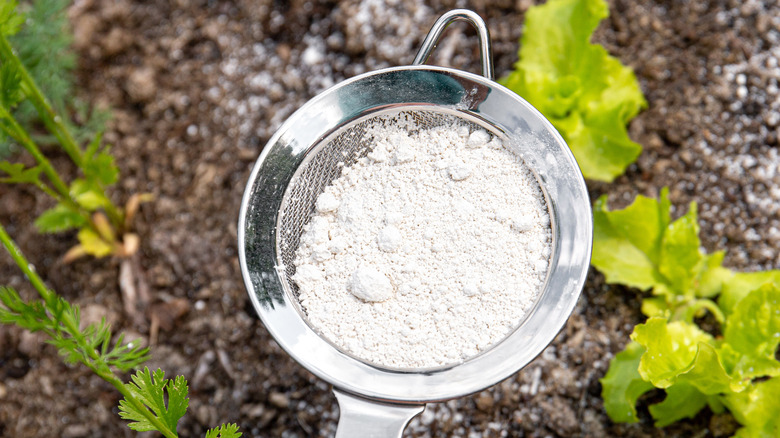Natural Ways To Keep Boxelder Bugs Away From Your Home & Garden
Boxelder bugs make their presence known in late summer through early fall when they start swarming the sunny, south-facing sides of houses. While they don't actually cause any damage to homes, they can cause damage to plants. Both nymph and mature boxelder bugs prefer to feed by piercing tender foliage and sucking out the fluids, which can cause yellowing and misshapen foliage. However, you don't need to turn to harmful pesticides. There are plenty of effective, natural solutions to get rid of boxelder bugs and keep your house bug-free.
The main issue with boxelder bugs is their tendency to seek shelter indoors. They can quickly become a nuisance if they sneak in through your entryways, and squishing them can leave reddish-orange stains behind. Opening doors to go in or out of your home can result in being swarmed after they've been disturbed. And, let's be honest, even if you know they aren't hurting anything, seeing insects taking up residence in your home will never not be unsettling. By preventing them from getting into your home or garden in the first place, you can reduce your worries about them in the long run.
Seal your home so they can't get inside
With that in mind, the first course of action should be to seal your home so the boxelder bugs can't get in. Their goal is to find a place to shelter for the winter so they can emerge in spring, mate, lay eggs, and start the cycle over again. Considering that, there are several important things to do to keep these insects out of your house. These tasks should be completed before the end of August to ensure your home is sealed up before the boxelders start swarming.
To prevent boxelder bugs from getting into your home, start by fixing or replacing any damaged screens on your home's windows or doors. Install door sweeps at the bottom of any exterior doors, and if your garage door doesn't have a rubber seal along the bottom, install one of those as well. Seal up any areas where a hole has been made from the exterior to the interior of your home. This could include hose faucets, dryer vents, and around wires and utility pipes. You might also have to inspect other areas. If there are cracks in your siding, foundation, or around your chimney, those should be sealed as well. Depending on the size of the opening, silicone caulk or expanding foam can help keep the bugs outside.
Wash them away
Boxelder bugs tend to hang out on sunny, south-facing walls. They're also attracted to light surfaces, so if you have light-colored siding on the south side of your house, you might end up with a rather large swarm. That's also usually the side of the house they'll try to enter your home from, since they're already gathered there. The fact that they have preferred gathering spots makes it a bit easier to get rid of them, and all it may take is a spray of water from the hose.
To get boxelder bugs off of your house, grab your garden hose and a nozzle. Turn the water on and start spraying the side of your house where they have gathered. Use a stronger setting rather than something like a mist if you have the option. The strong blast of water will get them off of your house and flying in search of a more hospitable place to land. This isn't a permanent solution, of course, but it's a good way to clear the side of your house if you're hosting a barbecue or are expecting visitors.
Manage elder trees
The reason boxelder bugs are hanging out on your house is because there are host trees somewhere nearby, which is what's drawing them to the area. The host tree for these bugs is the female boxelder tree. Boxelder bug nymphs feed on the seeds of this tree, and the bugs also shelter at the base during winter. So, a good first step is to check your property for any boxelder trees. If you're not confident in your tree identification skills, an app like PlantNet can help.
If the tree isn't on your property, or it is and you don't want to remove it, you can still manage it to reduce the number of boxelder bugs hanging around. The draw for the bugs is the fallen seeds, which, as we noted earlier, boxelder nymphs eat in early spring. By raking up the fallen boxelder seeds and destroying them (don't compost, or you might have boxelder bugs swarming your compost pile), you may reduce the number of bugs in your yard. They'll also feed on other species of maple tree seeds, so it's not a bad idea to rake up and remove any you see.
Make it shady so your house will be less attractive
Warm, sunny walls are what attract boxelder bugs, so, what if you made those walls less sunny? You can install temporary items to shade the south wall of your home. Or, you can look into options that will permanently create shade on that side of your house, making it less attractive to boxelder bugs. If you have the budget and it makes sense aesthetically, you could call a contractor to install a permanent awning on that side of your house, especially if you have an entry door there. The awning would keep the door area shady, so the boxelders may be less likely to gather there.
Planting fast-growing shade trees on the south or west side of your house is a long-term solution that could work as well. But, avoid planting tree species that will be attractive to boxelder bugs, like boxelder trees (Acer negundo) and members of the maple (Acer) family. Secondly, plant the tree far enough away from your home that it won't cause damage to foundations and the branches will stay well away from your roof and siding.
Some scents may deter boxelder bugs
Some scents seem to repel boxelder bugs, offering an additional layer of defense. While the effectiveness is mostly anecdotal, some pest professionals recommend utilizing these natural repellents. Lavender, eucalyptus, thyme, cinnamon, and tea tree oil are often touted as being unappealing to boxelder bugs. There's also some evidence that the fragrant scent of peppermint can deter them as well
The best way to use these scents is to make a DIY spray. Create a spray by mixing 10-15 drops of your chosen essential oil with a cup of water in a spray bottle. Shake well before each use and spray doorways, windowsills, and other potential entry points. Re-apply the spray every few days, especially after rain or heavy winds, as the scent will weaken over time. Remember, repellents aren't likely to do much against existing infestations, but may deter future invasions when used regularly.
Use a homemade soap spray to kill box elder bugs
A simple homemade soap solution can be effective in getting rid of boxelder bugs. This contact insecticide works by disrupting the bugs' waxy outer layer. While it's a cheaper alternative to commercial insecticides, it's important to remember it's a contact killer. You'll need to spray the bugs directly for it to work, and it won't repel them. Homemade soap sprays should also never be used on plants, since they can damage the foliage.
To make a DIY soap spray, mix 4 tablespoons of liquid dish soap with a gallon of warm water and add it to a spray bottle. Spray the solution directly onto the boxelder bugs, being sure to completely coat them in the soapy spray. It can take anywhere from a few minutes to up to an hour for the soap solution to kill them. If you notice boxelder bugs after this first application, you'll have to spray them again. But over time, you may be able to deplete their population.
In terms of which brand of dish soap works best, there are no official studies. There is some anecdotal evidence among gardening experts that original Dawn dish soap or castile soap is effective, but it's worth trying whatever you have in your cabinet. If it isn't effective, try another option or a commercially available insecticidal soap.
Using a commercially-produced insecticidal soap
You can also use a commercially available insecticidal soap. These are also contact insecticides, though they tend to be more potent than DIY sprays, so they're likely to work faster. Plus, they're safe to use on plants, so if you're noticing boxelder bugs swarming a favorite shrub or tree, you can spray them without worrying about damaging them. Though these sprays are safer for plants than homemade soap sprays are, it's still important to use insecticidal soap under the right conditions. Spray on a cloudy day, since wet, soap-covered leaves can get burned by bright sunlight. It's also a good idea to avoid spraying plants with insecticidal soap when it's hot (over 90 degrees) or the plants are already unhealthy or stressed.
When you're looking for insecticidal soaps, there are a couple of options. The first is a concentrated form that you dilute with water according to the directions on the package. The second is a ready-to-use spray that won't require any additional preparation. Either one can be effective as long as you follow the instructions for use. Insecticidal soaps need to be sprayed directly onto the boxelder bugs, coating as much of their body as possible. You'll have to spray every few days as more boxelder bugs appear. But, the advantage of these sprays over homemade ones is that you can treat your landscape as well as the hard surfaces of your home. One thing to watch out for: Insecticidal soaps can stain some hard surfaces (such as cedar decking or siding). So, if you're spraying it on your home, try it in an inconspicuous area first.
Remove sheltering spots around your home
Box elder bugs love to hide in cozy nooks around your home before invading your space. To discourage them, take a walk around your yard and identify potential box elder bug hotels. Wood piles, rock formations, and overgrown vegetation all provide excellent shelter for these unwelcome guests.
Start by removing any unnecessary woodpiles or rearranging them away from your house. Get rid of any rock piles as well. Finally, trim back overgrown plants, shrubs, and trees, especially those close to your foundation. By eliminating these cozy hiding spots, you can make your yard less attractive to boxelder bugs, forcing them to look elsewhere for shelter. This will not only help with the current infestation but can also make your yard less inviting for future boxelder bug invasions.
Apply diatomaceous earth around the exterior of your home to discourage and kill box elder bugs
Diatomaceous earth (DE) is a powder made from fossilized algae that can be effective against box elder bugs. It works by absorbing oils from the boxelder bugs' exoskeletons, while also creating tiny cuts when they crawl through the powder. This eventually causes them to dehydrate and die. While using diatomaceous earth is a natural option, it's important to follow safety precautions when using it, since inhaling the powder can irritate the lungs. Be sure to wear a mask and gloves when applying it.
However, diatomaceous earth won't be effective as your only line of defense when it comes to getting rid of boxelder bugs. Since these bugs can fly, the powder is best used in combination with other solutions, such as those mentioned elsewhere in this list. It's most effective when applied around windows, doorways, or any cracks where the bugs might crawl through to enter your home.
